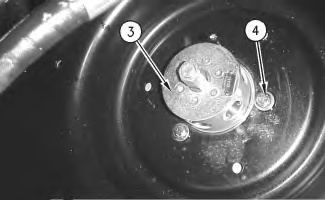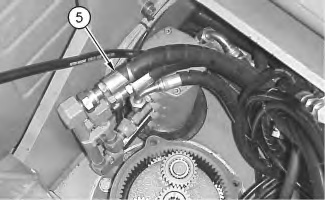Removal Procedure
| Required Tools | |||
| Tool | Part Number | Part Description | Qty |
| A | 6V-9507 | Face Seal Plug | 3 |
| 6V-9828 | Cap As | 3 | |
| 6V-9508 | Face Seal Plug | 3 | |
| 6V-9829 | Cap As | 3 | |
| 6V-9509 | Face Seal Plug | 4 | |
| 6V-9830 | Cap As | 4 | |
| 6V-9511 | Face Seal Plug | 1 | |
| 6V-9832 | Cap As | 1 | |
Start By:
- Remove the swing motor. Refer to Disassembly and Assembly, “Swing Motor – Remove”.
Note: SERVICE DATA: TOOLING (A) WILL NOT BE IDENTIFIED IN PHOTOGRAPHS IN THE REMOVAL OR THE INSTALLATION. THIS TOOLING IS SHOWN IN ORDER TO ASSIST THE EXPERIENCED SERVICEMAN.
|
Personal injury can result from hydraulic oil pressure and hot oil. Hydraulic oil pressure can remain in the hydraulic system after the engine has been stopped. Serious injury can be caused if this pressure is not released before any service is done on the hydraulic system. Make sure all of the attachments have been lowered, oil is cool before removing any components or lines. Remove the oil filler cap only when the engine is stopped, and the filler cap is cool enough to touch with your bare hand. |
|
|
| NOTICE |
|---|
|
Care must be taken to ensure that fluids are contained during performance of inspection, maintenance, testing, adjusting and repair of the product. Be prepared to collect the fluid with suitable containers before opening any compartment or disassembling any component containing fluids. Refer to Special Publication, NENG2500, “Caterpillar Tools and Shop Products Guide” for tools and supplies suitable to collect and contain fluids on Caterpillar products. Dispose of all fluids according to local regulations and mandates. |
|
|
Note: Put identification marks on all hose assemblies and on the cylinder for installation purposes. Plug all hose assemblies. This will help to prevent fluid loss and this helps to keep contaminants from entering the system.





